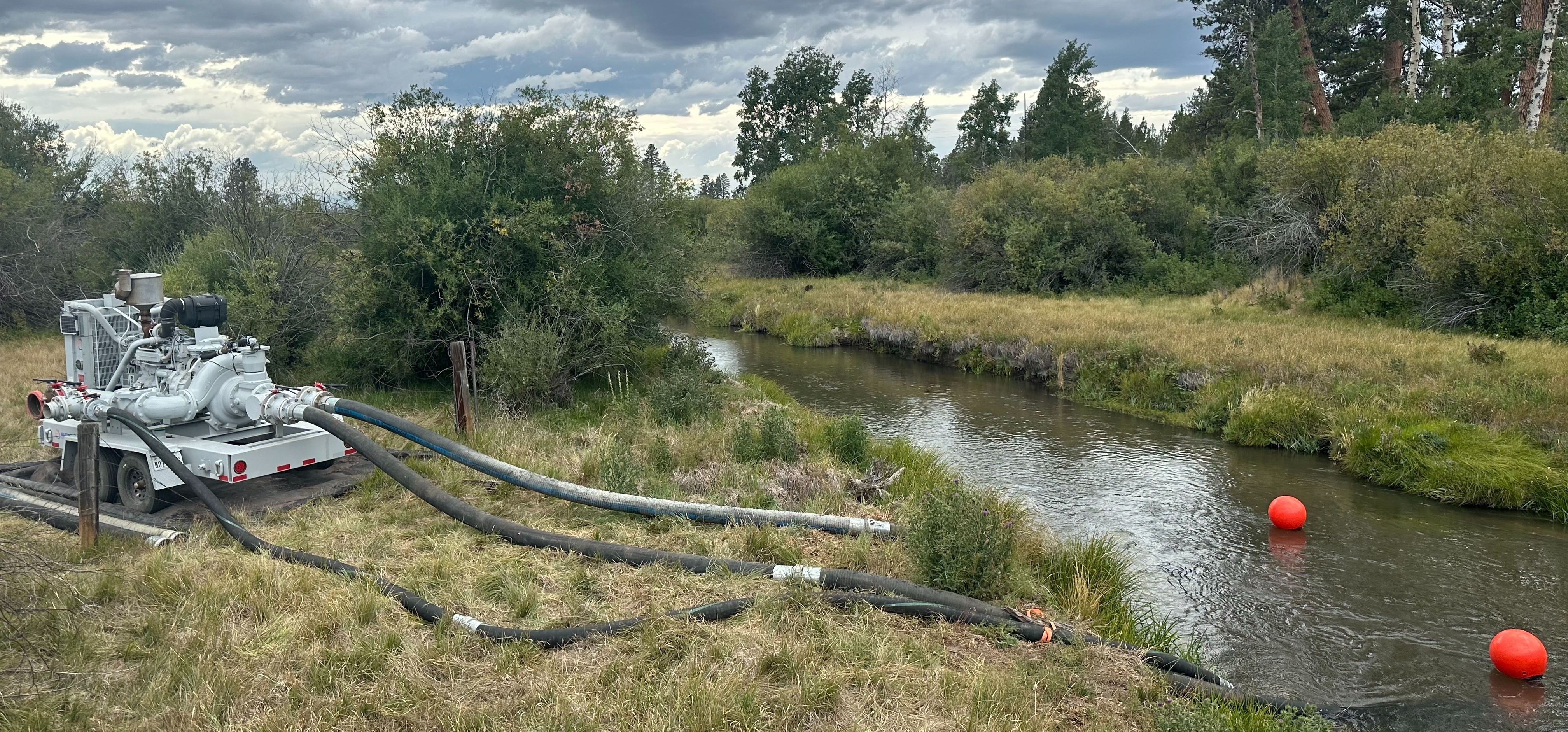Efficient use of water systems key to peat fire response
A new wildland firefighting solution quickly contained a peat fire in the Klamath Marsh National Wildlife Refuge in South Central Oregon, preventing tens of thousands of acres from burning, and protecting ecologically sensitive habitat and several endangered species.
Unusual Fire Terrain
The peat fire, sparked by lightning on August 15, was not a typical wildland blaze. The fire burned deep underground, across terrain marked by four-foot-wide fissures and soft, unstable ground, making it hazardous for people and equipment. Peat fires spread below the surface, often moving undetected under traditional containment lines.
The fire initially burned 25 acres and was surrounded by dry grass in peak fire conditions while the nation was at its highest preparedness level. On August 21, the U.S. Fish and Wildlife Service reached out to Wildfire Water Solutions (WWS). Their solution involved delivering a continuous water supply from a source 17 miles away with low to no impact environmentally.
“There are no visible flames with peat fires, so you have to work the perimeter,” said Claren Nilsson, Chief Operating Officer of Wildfire Water Solutions. “The best option to fight this fire was to put a lot of water on it, but we had to consider how drawing from the river would affect the local endangered fish species.”
WWS coordinated with U.S. Fish & Wildlife and the local tribes to ensure minimal water usage to protect the Tulelake snub-nosed sucker.
WWS Solution
On August 22, WWS deployed an 18.5-mile (additional 1.5 miles to completely surround the fire), 10-inch lay-flat hose from the Williamson River to the fire. The 100-mile-long Williamson River, along with its main tributary, the Sprague River, supplies over half the inflow to Upper Klamath Lake, Oregon’s largest freshwater lake.
According to FS Pro Modeling, based on fuels composition and current conditions, there was a greater than 90% chance of a 25,000-acre fire threatening communities, tribal lands, and habitat.
However, the WWS system was so successful, after just 33 days on site, a season ending weather event was not needed to demobilize all suppression assets.
“It took us 28 hours to lay out 18.5 miles our mobile pipeline and pumps to provide continuous water from source to destination,” explained Mike Echols, CEO of Wildfire Water Solutions. “This solution provided 7.5-times more water with less impact on the land and sensitive ecological area and habitat. Crews used their water lines to clear two feet of ash covering the landscape so they could saturate the terrain below, effectively creating a 10 foot deep water wall below the surface to stop the fire’s spread. The high volume of water filled the large cracks and deep fissures, seeping into the peat itself, and cooling the entire area.”
Cost Savings
Using the WWS system was estimated to be 60% less expensive than incident commands best alternative, saving over $1.5 million in 33 days.
With the system in place and operational, other resources, such as water tenders, were freed up for use on other fires.
“Continuous, uninterrupted water is a new solution in fighting wildland fires,” explained Echols. “Our solution increases productivity, containing fires faster and costing less than traditional methods. This should be how we fight wildland fires in the future, boosting resource productivity and increasing safety.”
For more information about Wildfire Water Solutions, please visit wildfirewatersolutions.com.

